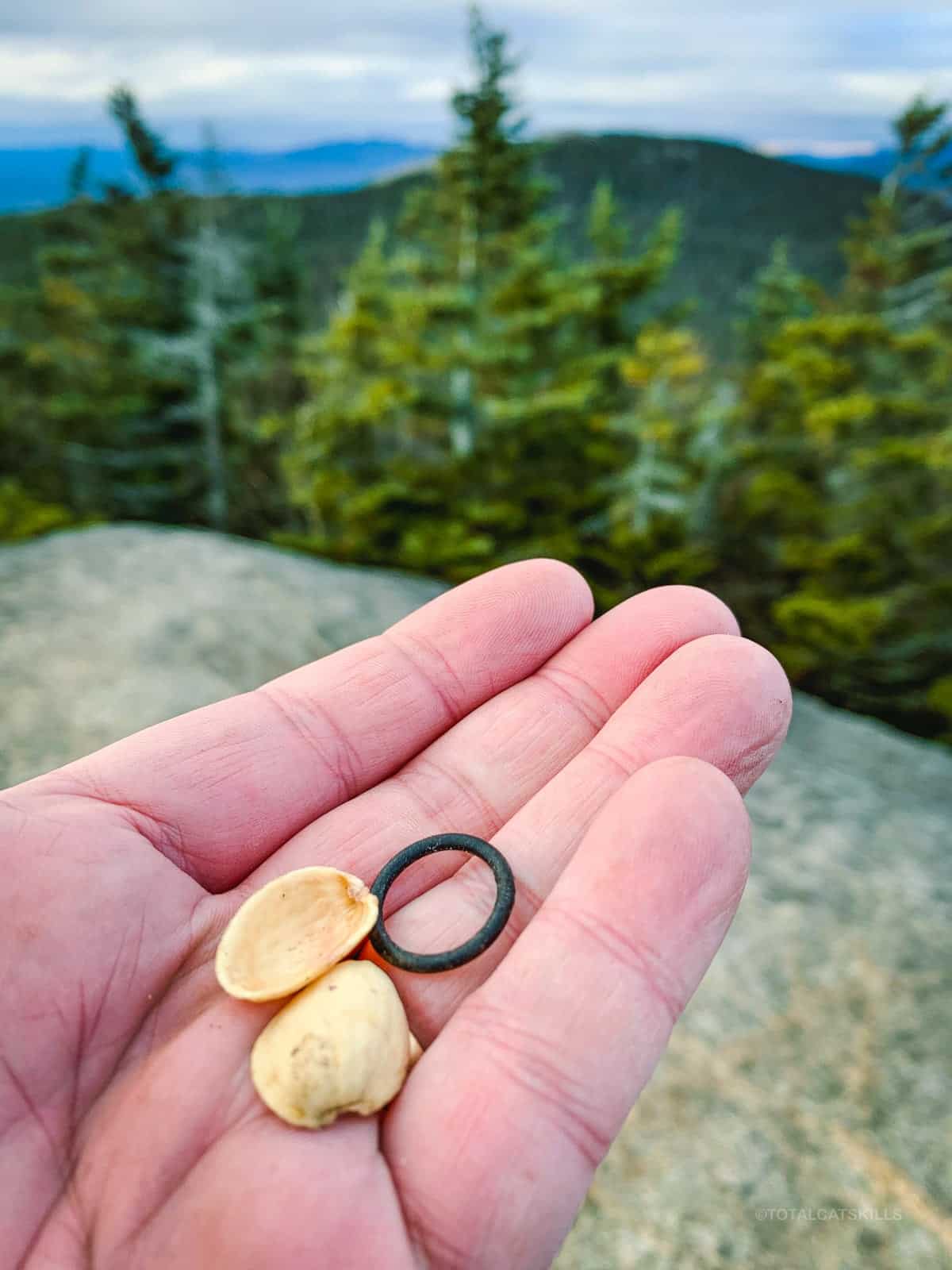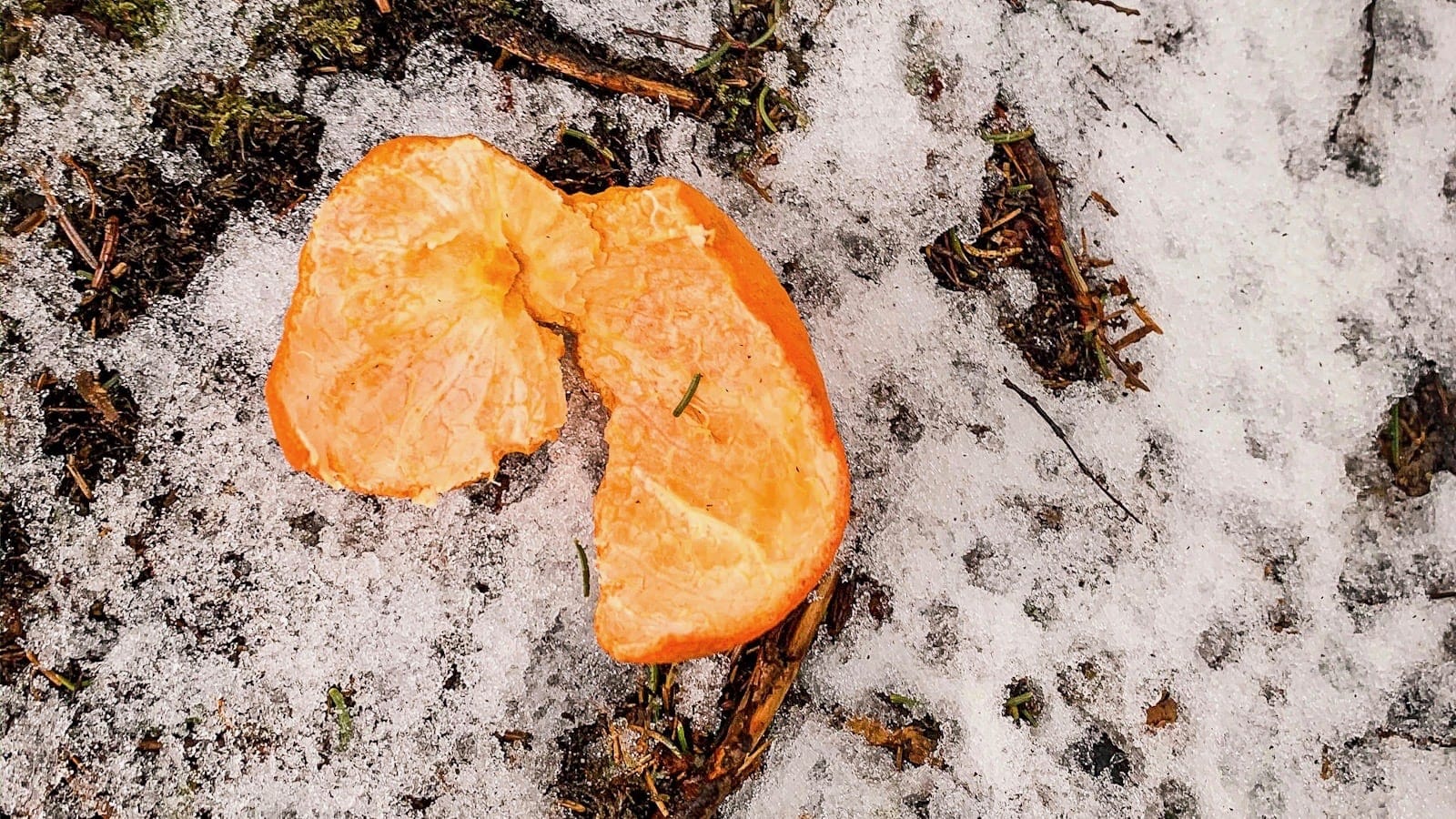Disclosure: This content may contain affiliate links. Read my disclosure policy.
As more and more of us head into the outdoors, litter has become an issue in New York’s wilderness. Our hiking trash is not just an eyesore. It also poses a danger to local wildlife and delicate ecosystems. This is true even for organic materials we consider “natural” and “biodegradable”.
Many people don’t know how long it takes natural items to decompose, assuming that any biological matter they discard will break down quickly. It turns out that many of our common scraps take an astonishing amount of time to fully disintegrate.
Here are some of our most commonly discarded items, and how long they take to break down…
- Apple Core — Up to 2 Months
- Orange Peel — Up to 2 Years
- Banana Peel — Up to 2 Years
- Pistachio Shells — Up to 4 Years
Recently, I picked up an empty plastic water bottle on South Mountain. I wasn’t mad. It had the feeling of an accidental drop rather than… trashy behavior.
We can all drop trash inadvertently. I’ve pulled things out of pockets I didn’t mean to. A bottle has fallen out of my backpack more than once. It happens.
But food scraps are different — because we think about them differently.
Like many people, I once thought it was okay to discard small scraps of food outdoors, figuring they would quickly disintegrate, or maybe even provide a small amount of harmless nourishment for something out there.
But the truth is that anything we leave on a mountain is eco-trash. And even “healthy” and “natural” items are deeply problematic.
Chipmunks vs. Bears
Apart from the lousy aesthetic of seeing trash on the trail — something all nature lovers find fundamentally disturbing — there are two reasons leaving scraps of food lying around in nature is a bad idea.
- Many common foods are toxic to mountain flora and fauna. Apart from adding pesticides and hormones into the environment, some of our foods contain chemicals that are toxic to local fauna. When animals eat something that’s not in their normal diet, it can set them up for long term problems like salt imbalances and winter starvation. Most animals are highly adapted to their environment. Dorito dust and M&M fragments are not part of Mother Nature’s food chain. Veggie Straws are not canon.
- Training animals to human foods trains them to human proximity. Yes, those chipmunks at Giant Ledge are super brazen and super cute — and their behavior is a warning sign. By littering scraps on or near our trails, we train animals to come to those locations in search of more. Cute when it’s a chipmunk. Not so cute when it’s a bear. (Bears are super smart, BTW. They can be trained by a single instance. If they find something delicious in a location, they will absolutely be coming back to that location.)
Trash Disintegration in Nature
I don’t see very many banana peels in the Catskills. I do sometimes find clementine peels and pistachio shells. Unlike the plastic bottle I found, these scraps feel deliberately discarded to me. They’re typically at scenic spots and seem strewn around an area where a person might have be standing, quietly admiring nature…

Unless someone packs them out, those items will sit there for years.
Of course, man-made items take even longer to break down…
- Wool Socks — Up to 5 Years
- Leather — Up to 5 Years
- Plastic-Coated Paper — Up to 5 Years
- Cigarette Butt — Up to 12 years
- Plastic Bags — Up to 20 Years
- Nylon Fabric — Up to 40 Years
- Tin Cans — Up to 50 Years
- Aluminum Can — Up to 100 years
- Plastic 6-Pack Holder — Up to 100 years
- Glass Bottles — 1,000,000 Years!
In fact, petrochemical products never truly breakdown. Essentially, they remain in the environment forever. Micro-plastics may turn out to be the asbestos of the 21st Century.
Big Deal, Easy Fix
Every piece of trash is a big deal. Much of our trash lasts longer than a human lifetime. We know this about our man-made materials. But even biodegradable trash is still trash — for many months at least, and sometimes for years.
Well-prepared hikers know to pack the ten essentials (a list of mandatory items everyone should take on every hike) but recently an eleventh essential has been appended to the list: the humble plastic bag — for picking up and packing out other people’s trash.
You don’t have to just leave no trace. You can also leave the wilderness even better than you found it.


I met that chipmunk on the Giant Ledge. It went right for my pack. I shooed it away and it got very indigent. Obviously its hoodwinked people with its cuteness. I wasn’t going for it.
By next year, they’ll be packin’ switchblades. Real tough.